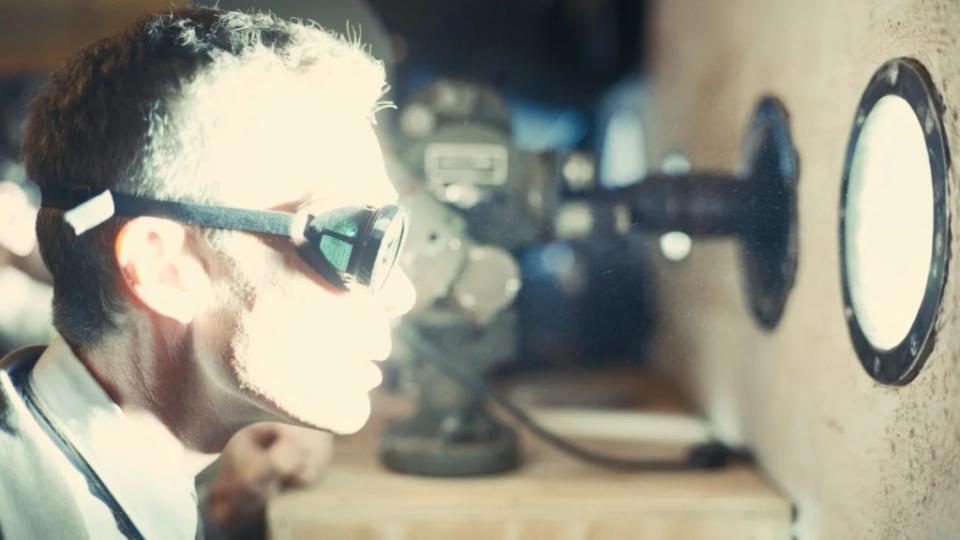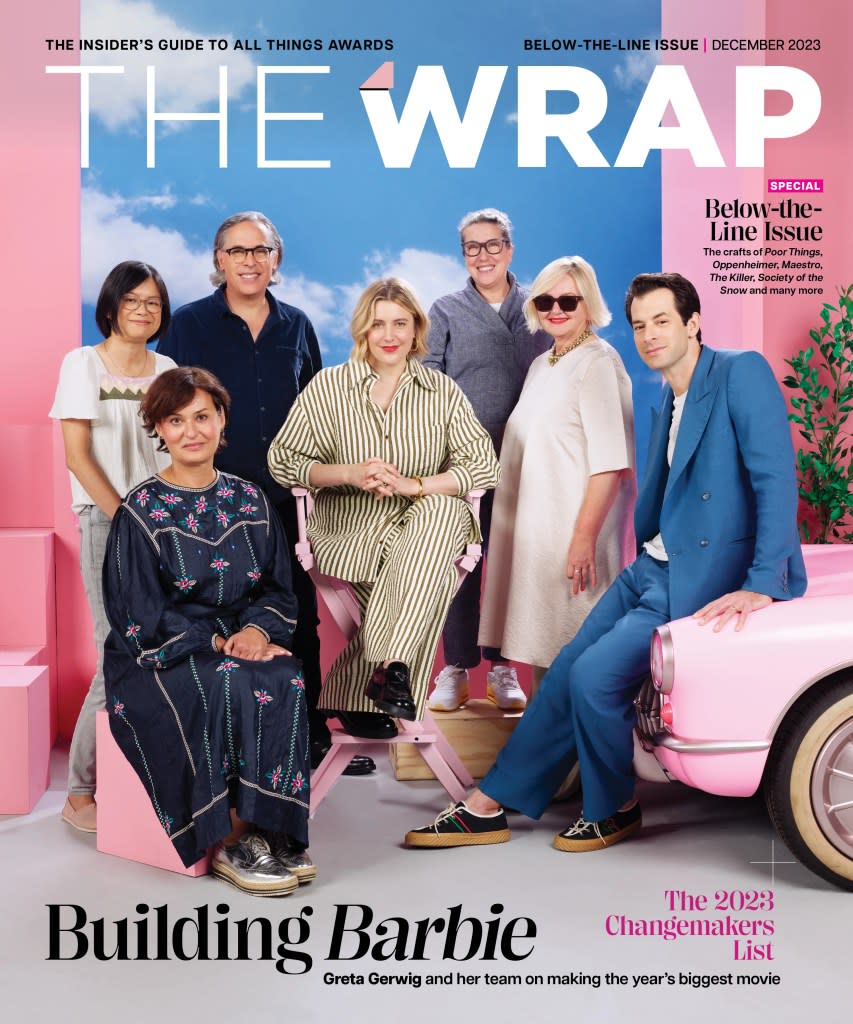With ‘Oppenheimer,’ ‘Maestro’ and ‘Killers of the Flower Moon,’ This Is the Year of Female Editors
- Oops!Something went wrong.Please try again later.
- Oops!Something went wrong.Please try again later.
- Oops!Something went wrong.Please try again later.
- Oops!Something went wrong.Please try again later.
- Oops!Something went wrong.Please try again later.
The Academy picked the right year to give an Honorary Oscar to film editor Carol Littleton. They’re saluting a female editor at a time when three of the year’s major awards contenders —“Killers of the Flower Moon,” “Oppenheimer” and “Maestro” — are edited by Thelma Schoonmaker, Jennifer Lame and Michelle Tesoro, respectively, and when other women in the mix include Hilda Rasula for “American Fiction,” Victoria Boydell for “Saltburn,” Sarah Flack for “Priscilla” and co-editors Claire Simpson (with Sam Restivo) for “Napoleon” and Oona Flaherty (with Nick Moore) for “Are You There, God? It’s Me, Margaret.”
“The Editors Guild has about 2,900 picture editors, and 764 women,” said Littleton, a one-time president of that guild. “That’s about a fourth. So isn’t it interesting that these three big prestigious films, ‘Oppenheimer,’ and ‘Killers of the Flower Moon’ and ‘Maestro,’ are edited by women?”
If all three are nominated for Oscars it’ll be only the third time in Academy Awards history that three women have been nominated in a category whose nominees have been almost 85% male. The last time was in 2016, when Margaret Sixel won for “Mad Mad: Fury Road” and Maryann Brandon and Mary Jo Markey were nominated for “Star Wars: The Force Awakens”; four decades earlier, Verna Fields won for “Jaws,” Dede Allen was nominated for “Dog Day Afternoon” and Lynzee Klingman was nominated alongside Richard Chew and Sheldon Kahn for “One Flew Over the Cuckoo’s Nest.”
For the most part, the women in contention this year say they didn’t feel disadvantaged by their gender when they came up in the business. “I love the work of Sally Menke, Anne V. Coates, Thelma Schoonmaker, Teri Shropshire, Mary Sweeney, Sarah Flack, Maysie Hoy … too many to name!” Tesoro said. “All these films that I watched during my formative years that were edited by women encouraged me. I didn’t perceive any barriers getting into the field because many of the people who opened the door to me were diverse themselves.”
Lame agreed, with one key caveat. “I never felt barriers coming up because both men and women really helped me rise through the ranks,” she said. “But, if I’m being completely honest, as I got older I did have some reality checks, especially when I started to realize how differently men and women got paid. I didn’t get bogged down in the women v. men thing, but I was pretty shocked by the disparity.”
There’s been a disparity in awards, too: Although Anne Bauchens was one of the three Oscar nominees in 1934, the first year the Academy gave out an award for editing, women have received only about 14% of the nominations and won about 16% of the awards in the category over the years. But those women are among the stars in their field: Anne V. Coates (“Lawrence of Arabia”), Verna Fields (“Jaws”), Marcia Lucas (“Star Wars”), Thelma Schoonmaker (“Raging Bull,” “The Aviator” and “The Departed”) and others.
Schoonmaker is back in the mix this year with “Killers of the Flower Moon.” The 83-year-old editor, who has spent most of her career working with a single director in Martin Scorsese, is currently tied for first in both editing nominations (eight) and wins (three). She declined to speak for this piece, but in a conversation after the film’s premiere at the Cannes Film Festival, she marveled at how much actress Lily Gladstone gave her to work with in the editing room. Scorsese’s films, she said in an interview with TheWrap in 2020, always give her something new to do, even after more than 20 collaborations: “Each one is a new challenge because he doesn’t want to repeat himself.”
While “Killers” is a titan in this year’s race, so are “Oppenheimer” and “Maestro,” both epics that mix black-and-white and color footage as they span decades in the lives of notable men who left a mark on America in the 20th-century.

“Oppenheimer” was the second movie Jennifer Lame has edited for Christopher Nolan in a career that includes more intimate films by Noah Baumbach (“Frances Ha,” “Mistress America,” “The Meyerowitz Stories,” “Marriage Story”) and Kenneth Lonergan (“Manchester by the Sea”), along with Ari Aster’s “Hereditary” and “Midsommar.” And while her first outing with Nolan, “Tenet,” used such labyrinthine storytelling and thorny themes as to be barely comprehensible to audiences, she wasn’t worried about his new film.
“I definitely found that one much more difficult,” she said with a laugh. “It was very much out of my comfort zone. But I loved this one as soon as I read it.”
She read the script in Nolan and producer Emma Thomas’ office – which, she admitted, is a tough way to start. “You go there and you have a certain amount of time, which is nerve-wracking because you want to take it all in and have smart things to say afterwards, but you have to hurry up and read it,” she said. “But I just remember that I was so relieved because I just loved it. And I’m not a good liar, so it was easy to walk into that office and gush about all the things I loved.”
Among those things were Nolan’s choice to shoot the scenes that are from Oppenheimer’s perspective in color and to use black-and-white photography for the ones that focus on Robert Downey Jr.’s character, Lewis Strauss. “I love the idea that he’s using color and black and white for subjectivity and not for time,” she said. “How cool is that? People immediately see black and white and think, oh, this is the past, but that’s not what he’s doing at all. I smiled to myself when I realized that as I was reading it. It just makes people think more, and that’s what his movies are so great for.”
Lame said the biggest challenge was the opening stretch of the film, because it had to convey so much information and set up so much of the rest of the film. “I really wanted the first 20 minutes to lock in a lot of stuff, but I didn’t want it to feel overwhelming, or chaotic or rushed. And that’s a tall order when you’re setting up Oppenheimer (Cillian Murphy) and his story. You’re telling the story of Strauss (Robert Downey Jr.) and the Senate hearing, you’re jumping in time and setting up the color and the black and white. It’s a lot of information.”
From that opening, Lame added, “Each section had its own rhythm and pacing. Over the course of the film, it was constant calibration of all that. I always describe it as very orderly and creatively chaotic.”

By contrast, Bradley Cooper’s “Maestro” was more straightforward. After the usual biopic setup of an older subject sitting down for a retrospective interview, it flashes back to a black-and-white section that details the early career of conductor/composer Leonard Bernstein, which then gives way to color for the second part of his life. Michelle Tesoro, whose best-known work was on the television shows “In Treatment,” “House of Cards,” “When They See Us” and “The Queen’s Gambit,” for which she won an Emmy, came to Cooper’s attention after cutting Sean Penn’s “Flag Day” in 2021.
In “Maestro,” she said, “We didn’t have an editing style; we just listened to what the footage wanted us to do. The performances, the camera work, the mise-en-scène had its own rhythmic quality, which strongly guided the edits. We only cut when it’s important to cut, and we cut with intention.”
The key in both the black-and-white and color sequences, she said, was “sticking to the spine of the story of Lenny (Cooper) and Felicia (Carey Mulligan), and not letting other storylines, however fascinating, pull focus away from the ebb and flow of their relationship.”
Bernstein’s music, she said, helped drive the movie. “This film is not a musical, but it certainly is musical. There were many cues that were already written into the script, and the placement of those cues within the story were like keystones that guided the pacing in between. At the very end of editing, we were still carving out these ‘movements’ in the film. (They) were like waves that would begin in one scene and crest a few scenes later at a big musical or dramatic moment.”
One example of a scene that was set up earlier in the film, she said, was the extended sequence in which Bernstein is conducting Mahler’s “Resurrection” symphony in a British cathedral, while Felicia watches him after years of their stormy relationship. One key, she said, was “to stay in that shot. The other, less obviously key is setting the stage for such a scene to shine. I mentioned how some cues in the film are like keystones, and Mahler Resurrection was one such cue. If you were to place this scene anywhere else in the film, it wouldn’t have the same impact.
“The scenes of Lenny and Felicia living apart provide the trough needed to get to the beginning of the crest of an emotional wave: where Felicia is looking into the camera telling us the truth of her love for Lenny, then holding that tension across the crest, which is Lenny conducting the whole of Mahler’s Resurrection. Then crashing on the reveal of Felicia there in the wings, reunited, and landing us in the doctor’s office where a new reality sets in, a new trough. This whole sequence just crushes people like a big wave would.”
A version of this story first appeared in the Below-the-Line issue of TheWrap’s awards magazine. Read more from the issue here.

The post With ‘Oppenheimer,’ ‘Maestro’ and ‘Killers of the Flower Moon,’ This Is the Year of Female Editors appeared first on TheWrap.

